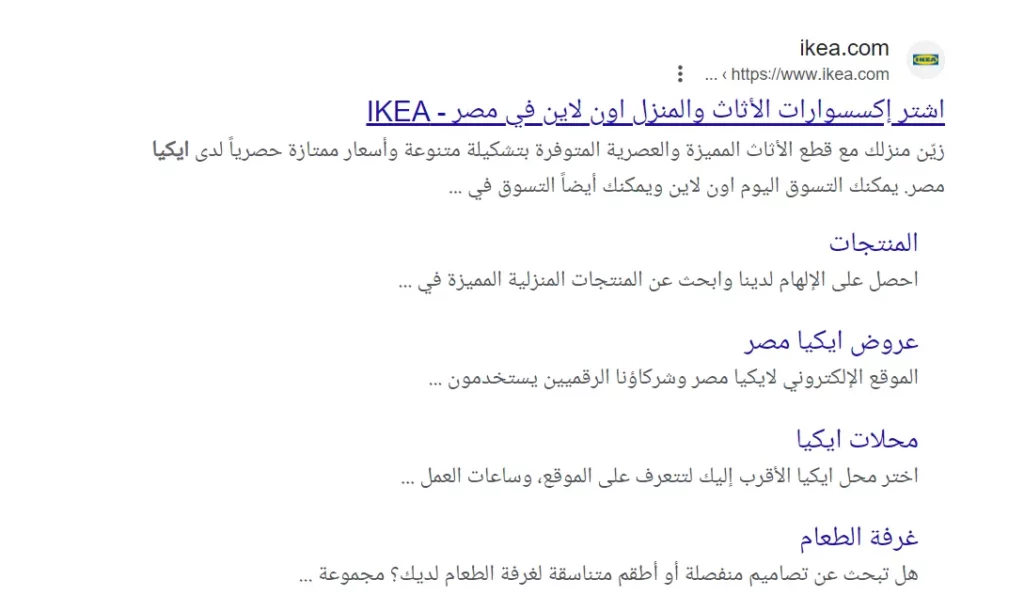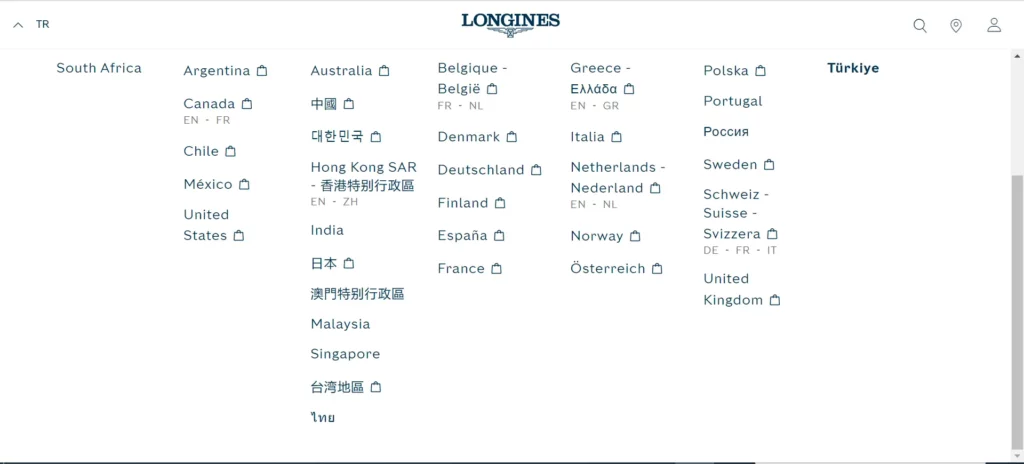None of us can imagine our life without E-commerce. No matter where we’re living at the moment, our location, or our native language, we are using E-commerce to get what we want to our doorstep.
This is why eCommerce localization plays a critical role in the process of reaching your target audience worldwide.
To achieve your growth strategy and to dive into global markets smoothly, you should think of localizing your e-commerce platform to the native language of your audience.
This is why eCommerce localization plays a critical role in the process of reaching your target audience worldwide.
To achieve your growth strategy and to dive into global markets smoothly, you should think of localizing your e-commerce platform to the native language of your audience.
Online Shopping Statistics That Will Make You Think of Ecommerce Localization
People's shopping habits have been changing quickly over the last decade, and E-commerce or buying and selling online is becoming the new normal thing.
• According to Tidio, the global eCommerce sales will likely reach $7 trillion in value. This huge growth has many reasons behind it. Such as, the increase in using mobile phones and purchasing using them.
• Statista says that “retail e-commerce sales were estimated to exceed 5.7 trillion U.S. dollars worldwide in 2022”.
• “Fashion and Apparel industry reached $759 billion in 2021 and expected to exceed $1 trillion by the end of 2025.” 99 Firms
• Grand View Research released a report about Cross-border E-commerce saying that it is expected for cross borders e-commerce to grow by 25.5% yearly from 2022 to 2030.
• When it comes to MENA's eCommerce market, it soared to $37bn in 2022, with double-digit growth from 2021 and a 32% compound annual growth rate between 2018 and 2022. Gulf Business
These numbers show how big the audience of eCommerce worldwide and in MENA to be more specific.
• According to Tidio, the global eCommerce sales will likely reach $7 trillion in value. This huge growth has many reasons behind it. Such as, the increase in using mobile phones and purchasing using them.
• Statista says that “retail e-commerce sales were estimated to exceed 5.7 trillion U.S. dollars worldwide in 2022”.
• “Fashion and Apparel industry reached $759 billion in 2021 and expected to exceed $1 trillion by the end of 2025.” 99 Firms
• Grand View Research released a report about Cross-border E-commerce saying that it is expected for cross borders e-commerce to grow by 25.5% yearly from 2022 to 2030.
• When it comes to MENA's eCommerce market, it soared to $37bn in 2022, with double-digit growth from 2021 and a 32% compound annual growth rate between 2018 and 2022. Gulf Business
These numbers show how big the audience of eCommerce worldwide and in MENA to be more specific.
How eCommerce Localization Can Help You Reach and Engage with your Global Audience
Your customers are around the corner, they are waiting for you to start a conversation with them in the language of their soul and heart. Not just a language they understand but one they can smile, show feelings and purchase at the end when reading your ad, copy or landing page.
Talking in the native language of your customers doesn’t mean an automated translation. It means giving your words and products a living spirit, that knows the pain of the consumer and can help them get better.
English is a global language, but when it comes to buying and selling, 75% of global consumers prefer products that provide information in their native languages. Unbabel’s 2021 Global Multilingual CX Survey showed that:
1. Lack of native language support leads to customer attrition: 68% of your consumers would switch to another brand that provides support in their native language.
2. Communication in the native language of your customer is valuable, 75% of the US consumers limit spending to $500 on brands that don’t offer a native-language customer experience, and 64% are willing to pay more if it was provided.
This is how not localizing your eCommerce can harm your business. Ecommerce localization can be the absolute solution for your global growth.
When localizing your eCommerce, you will gain these five benefits:
Talking in the native language of your customers doesn’t mean an automated translation. It means giving your words and products a living spirit, that knows the pain of the consumer and can help them get better.
English is a global language, but when it comes to buying and selling, 75% of global consumers prefer products that provide information in their native languages. Unbabel’s 2021 Global Multilingual CX Survey showed that:
1. Lack of native language support leads to customer attrition: 68% of your consumers would switch to another brand that provides support in their native language.
2. Communication in the native language of your customer is valuable, 75% of the US consumers limit spending to $500 on brands that don’t offer a native-language customer experience, and 64% are willing to pay more if it was provided.
This is how not localizing your eCommerce can harm your business. Ecommerce localization can be the absolute solution for your global growth.
When localizing your eCommerce, you will gain these five benefits:
1. Increase the Visibility and Credibility of Your E-commerce Website
Using the native and local language of your customers will have some significant results, as it will help you reach a wider audience. When offering content and communication in your customers' native language, you will expand your reach to a larger segment of the population. Allowing you to tap into new markets and attract more potential customers who prefer engaging in their native language.
eCommerce localization improves the navigation of your website in the native language of your customers and creates a seamless and personalized experience. This level of comfort and familiarity builds trust and enhances overall satisfaction with your brand, leading to increased credibility.
eCommerce localization improves the navigation of your website in the native language of your customers and creates a seamless and personalized experience. This level of comfort and familiarity builds trust and enhances overall satisfaction with your brand, leading to increased credibility.
2. Improve Customer Satisfaction, Loyalty and Profitability
Communication is the key to a good relationship with your customers, and e commerce localization will boost your engagement with your potential consumers. Speaking in the language of your customers can drive you to win the game of E-commerce.
But how does it work?
The process of customer satisfaction starts with finding out where the gaps lie in the customer's experience and working to fix them. Sometimes that means changing the tone of voice you are using, creating more engaging content, or knowing the pain of your global targeted audience and working on relieving it with your products.
Using the native language of your customers can be the thing that satisfies them. They might be facing some troubles using their local currency, word-for-word translations, or not having a customized experience that fulfills their needs.
Ecommerce localization can help you not just gaining your customers’ satisfaction but can turn them into loyal ones. Localization can make your customers fall in love with your brand. It will help you start a conversation with them and keep it.
You will be talking to them as a friend who recommends a product that will help them solve a problem in their daily life. E-commerce localization will give your business a local persona that you can’t differentiate from other local brands. All of us know how important this is to gain loyal customers that will buy again and again, leading to more profits.
Using the native language of your customers can be the thing that satisfies them. They might be facing some troubles using their local currency, word-for-word translations, or not having a customized experience that fulfills their needs.
Ecommerce localization can help you not just gaining your customers’ satisfaction but can turn them into loyal ones. Localization can make your customers fall in love with your brand. It will help you start a conversation with them and keep it.
You will be talking to them as a friend who recommends a product that will help them solve a problem in their daily life. E-commerce localization will give your business a local persona that you can’t differentiate from other local brands. All of us know how important this is to gain loyal customers that will buy again and again, leading to more profits.
3. Get Your Products Out to a Wider Audience
The number of English speakers worldwide, natively or as a second language, is 1.5 billion people, which is 19.2% of the population. By only using English to communicate, you are missing out on huge numbers of potential customers. On the other hand, there is a wide customer base that doesn’t speak English and has the money to purchase your product.
Applying a multilingual marketing strategy provides a competitive advantage to your E-commerce business. E commerce localization offers a cost-effective and dependable approach to engage customers in emerging markets, resulting in a wider audience, improved lead generation, increased sales and enhanced customer support.
Companies that fail to offer content in the native language of their audience are neglecting a significant pool of potential customers and limiting their global growth opportunities.
Applying a multilingual marketing strategy provides a competitive advantage to your E-commerce business. E commerce localization offers a cost-effective and dependable approach to engage customers in emerging markets, resulting in a wider audience, improved lead generation, increased sales and enhanced customer support.
Companies that fail to offer content in the native language of their audience are neglecting a significant pool of potential customers and limiting their global growth opportunities.
4. Improve Search Engine Ranking (SEO)
Ecommerce localization is not about translating your content word-to-word. It’s about turning your business into another one that your targeted global audience can engage with by opening the link, reading and purchasing.
Here are some ways localization can help your website's multilingual SEO:
Here are some ways localization can help your website's multilingual SEO:
Targeting Local Keywords:
The keywords you are using in your English content are not the same for all your audience. Some of them use closer words for their culture or their daily needs. This is why the optimization of your e-commerce for local keywords that are relevant to your target audience is essential. This includes incorporating localized keywords in your website's meta tags, headings, content, and URLs. This helps search engines understand the local relevance of your website and improves its visibility in local search results.
Geographic Targeting:
Localization allows you to specify the geographic target of your website, signaling to search engines that your content is specifically tailored to a particular region. This helps search engines deliver your website to users searching for local information or services in that region, allowing you more visits to your website and more sales.
Backlink Building:
When you apply e commerce localization to your website, you can engage with local influencers, bloggers, and websites to build backlinks. Backlinks from reputable local websites can improve your website's authority and credibility in the local search market, allowing your audience to engage more with your website and leading to higher rankings in search results.
5. Improve Your Website's User Experience
Tailoring your E-commerce website or application to the specific needs, preferences, and cultural context of your target audience can improve it by 100%. Users are more comfortable and connected when they can access information, product descriptions and instructions in their preferred language. By translating your content into their native language, you are making it easier for them to understand and engage with your website.
Right-to-Left languages can cause lots of problems to your user experience. Some need specific software like the Arabic localization software that is different from other languages. Arabic requires specific adjustments in software design and layout. Proper RTL support ensures that Arabic text is displayed correctly, user interfaces are mirrored appropriately, and overall usability is optimized for Arabic users.
Localization of a language is not only what it takes to give your customers a great user experience. You need to work on the localization of the dates, numbers and currency of the country you’re targeting. These will make your users' experience much better. It will encourage them to engage with your website and purchase your products.
Right-to-Left languages can cause lots of problems to your user experience. Some need specific software like the Arabic localization software that is different from other languages. Arabic requires specific adjustments in software design and layout. Proper RTL support ensures that Arabic text is displayed correctly, user interfaces are mirrored appropriately, and overall usability is optimized for Arabic users.
Localization of a language is not only what it takes to give your customers a great user experience. You need to work on the localization of the dates, numbers and currency of the country you’re targeting. These will make your users' experience much better. It will encourage them to engage with your website and purchase your products.
Ecommerce Localization: A 9 Steps Process That Can Save Your Business from Future Problems
If you have a local product that you are planning for launching on the global level, you need to make it the right way through ecommerce localization to achieve your internationalization goal.
First step: In-depth analysis of your product
If you’re planning to have a successful business, you need to work on the analysis of your product and the new environment you are planting it in. You need to find out if it is suitable for your customers in the targeted area. Is it what people are looking for? Or is there another local product that you can’t compete with?
All these questions and more need an answer and a good analysis of your product and the target audience can save lots of wasted money.
All these questions and more need an answer and a good analysis of your product and the target audience can save lots of wasted money.
Second Step: Content Extraction from The Resource
In order to start the localization, you need to extract all the content there on your e-commerce website for our translator and our localization experts to make it suitable for your target audience in the country you are aiming to go for.
Third Step: Translation Memory AKA (The Heart of Translation Technology)
The (TM) is a linguistic database used to store and retrieve previously translated segments of text. It is essential to ensure consistency and improve efficiency in the translation process.
Fourth Step: Editing and Proofreading
Editing and proofreading are essential steps in the process of eCommerce localization to ensure the accuracy, clarity, and quality of the translated content.
Fifth Step: Localization
Translation is the first step but after that, there comes localization, the process of giving your product a voice tone and a character that looks like the local consumers.
Sixth Step: Multimedia Localization
Using media that is acceptable for the locals. Some cultures have some regulations or have traditional clothes they wear to work. To look professional, you need to use localized media, respecting the traditions of the target country.
Seventh Step: Multilingual desktop publishing (DTP)
By making DTP you are creating visually appealing and linguistically accurate materials that effectively communicate with the target audience in different languages.
Eighth Step: QA & Testing
Identifying and resolving any issues, ensuring a high-quality localized user experience, functional integrity, and customer satisfaction in the target market.
Ninth Step: Releasing an International Product
You’re ready to publish and go live with your localized E-commerce.
Technical Differences Between Ecommerce Localization and Website Localization
Website localization and ecommerce localization have some differences, e-commerce localization requires these extra steps:
1. Adding multiple payment methods that are familiar with the customer.
2. Localized customer service to help your customers in their native language.
3. Adapting shipping options that are available in the country.
These three steps need technical experts in E-commerce localization to help your eCommerce platform and will help you keep your customers engaged all the time not leaving your website or app without buying.
1. Adding multiple payment methods that are familiar with the customer.
2. Localized customer service to help your customers in their native language.
3. Adapting shipping options that are available in the country.
These three steps need technical experts in E-commerce localization to help your eCommerce platform and will help you keep your customers engaged all the time not leaving your website or app without buying.
4 Ecommerce Localization Case Studies Proved Localization Importance in Driving Growth and Global Expansion
1. Maybelline Newyork E-commerce Localization for MENA
Maybelline Newyork is one of the international beauty brands that has expanded over the years from one country to another. To support their globalization and expansion they have localized their business to many different cultures and languages.
In the middle east, Maybelline has used a very effective and a wise localization strategy and e commerce localization played the hero role in their strategy. They have used Arabic language, the native language of their audience in MENA and to make it work the right way they used Arabic localization software to make sure that their content is appearing the right way.
After a look at their localized e-commerce website, we found that they use the Arabic language in their products descriptions and localized currency like the Egyptian pound.
Their marketing campaigns depend on influencer campaigns and making deals with public figures to be the brand face in the region.
One of their tricks that we liked while studying their E-commerce is Maybelline Instagram account in Egypt. They are using the name “ahmarshafayef” which means red lipstick in Arabic, and it is a very strong Keyword they mastered when it comes to multilingual SEO.
In the middle east, Maybelline has used a very effective and a wise localization strategy and e commerce localization played the hero role in their strategy. They have used Arabic language, the native language of their audience in MENA and to make it work the right way they used Arabic localization software to make sure that their content is appearing the right way.
After a look at their localized e-commerce website, we found that they use the Arabic language in their products descriptions and localized currency like the Egyptian pound.
Their marketing campaigns depend on influencer campaigns and making deals with public figures to be the brand face in the region.
One of their tricks that we liked while studying their E-commerce is Maybelline Instagram account in Egypt. They are using the name “ahmarshafayef” which means red lipstick in Arabic, and it is a very strong Keyword they mastered when it comes to multilingual SEO.

How Localization Helped Maybelline?
• Using localized eCommerce ran a much deeper relationship with their customers. They can now communicate more easily with the brand without the barriers that the language difference creates.
• Uplifting sales in the MENA region. Using Arabic language helped in targeting more audience that doesn’t speak English. Which led to increasing brand awareness and eventually more sales.
• Uplifting sales in the MENA region. Using Arabic language helped in targeting more audience that doesn’t speak English. Which led to increasing brand awareness and eventually more sales.
2. Ikea E Commerce Localization Case Study

Ikea has a wide base of audience in MENA. For each country in the region. They use different content, and a website uses ecommerce localization as a strategy. It is rare to find an organization that is as global as IKEA. The global expansion is not just a strategy for IKEA it is in their DNA. IKEA operates more than 400 stores in over 49 countries and has suppliers located around the world.
IKEA corporate structure is a complex spiderweb of business entities. It has a small central localization team that has been tasked with bringing a level of standardization and centralization to the localization function throughout the organization.
To achieve their expansion goals in the MENA region they localized their E-commerce to suit their audience in each of the Arabic countries.
1. Arabic and English support is available.
2. Currency changes from country to another.
3. Different landing pages on each website.
IKEA corporate structure is a complex spiderweb of business entities. It has a small central localization team that has been tasked with bringing a level of standardization and centralization to the localization function throughout the organization.
To achieve their expansion goals in the MENA region they localized their E-commerce to suit their audience in each of the Arabic countries.
1. Arabic and English support is available.
2. Currency changes from country to another.
3. Different landing pages on each website.


3. SAMSUNG eCommerce Localization
E commerce Localization is one of the marketing strategies that SAMSUNG use to catch the attention of their audience. They always use the language of their target audience. This helped them create a close relationship and loyalty with their audience in the region. In MENA, SAMSUNG localized their website to solve their audience's tech problems, offering them a wide range of high-quality products.
SAMSUNG is one of South Korea's largest brands that has built a good reputation over the years. It's now at the top of the world, but do you think that it would reach all this success if it kept speaking only Korean?
The answer is a clear NO. There are only 75 million people speak Korean, and there are around 1.033 billion SAMSUNG smartphone users around the globe (only smartphones). Can you imagine the number of their products’ users globally.
They would not reach that if they didn’t work on their globalization strategy.
SAMSUNG is one of South Korea's largest brands that has built a good reputation over the years. It's now at the top of the world, but do you think that it would reach all this success if it kept speaking only Korean?
The answer is a clear NO. There are only 75 million people speak Korean, and there are around 1.033 billion SAMSUNG smartphone users around the globe (only smartphones). Can you imagine the number of their products’ users globally.
They would not reach that if they didn’t work on their globalization strategy.
4. Longines Luxury Watches eCommerce Localization

Longines Watches is a luxury brand that localizes its website to over ten languages worldwide. Longines is targeting a class A customer, so they use an elite localized website to suit their audience. Nothing special about the website but it’s very organized and adapted for each language perfectly. They also added different payment methods, and different currencies for each country.

How and Why Choosing a Localization Partner Is a Good Decision?
E-commerce is one of the industries that need years of experience to be localized perfectly. Here is why you should hire an agency:
1. Agencies Have Experience with Multiple Niches
Working with a localization agency will provide your e-commerce with years of experience as they have worked on different clients and localized different websites before. Which taught them how to get the job done in the most effective ways.
2. Agencies Use Different Technologies to Speed Up the Localization Process
The localization process can be speeded up, and translators know how.
Using these technologies can help your ecommerce localization to happen quickly. There are lots of technologies such as SDL Trados, memoQ, and Wordfast these are known as (CAT tools), and Translation Management Systems like XTRF.
Using these technologies can help your ecommerce localization to happen quickly. There are lots of technologies such as SDL Trados, memoQ, and Wordfast these are known as (CAT tools), and Translation Management Systems like XTRF.
3. The Ability to Manage Large Workloads
Some E-commerce websites contain thousands of products and trillions of words need to be localized to the target audience’s native tongue.
When hiring a localization agency, these pages can be translated in the highest quality taking care of the Multilingual SEO of your website to rank on Google’s first pages.
When hiring a localization agency, these pages can be translated in the highest quality taking care of the Multilingual SEO of your website to rank on Google’s first pages.
Then comes the HOW?
Before choosing a localization agency, take a look at these tips:
• Check out the agency’s background and reputation.
• Ask for the number of languages the agency is using.
• Check if they are familiar with SEO translation.
• Examine their previous work to see if they can handle your e commerce localization.
• Check out the agency’s background and reputation.
• Ask for the number of languages the agency is using.
• Check if they are familiar with SEO translation.
• Examine their previous work to see if they can handle your e commerce localization.
3 Reasons to Choose Saudisoft to Be Your Ecommerce Localization Agency
When planning for your ecommerce localization strategy, you need to choose an agency with years of experience in the industry. And that is what Saudisoft offers you.
1. Consultation and advice from experts with over 40 years of experience in the localization industry.
2. A lineup of global clients that created a diverse and detailed portfolio of satisfied Clients.
3. You will get your website translated, localized and ranking on top of Google's first page because we take care of your SEO.
1. Consultation and advice from experts with over 40 years of experience in the localization industry.
2. A lineup of global clients that created a diverse and detailed portfolio of satisfied Clients.
3. You will get your website translated, localized and ranking on top of Google's first page because we take care of your SEO.
If your e-commerce is striving to reach global consumers, you need Saudisoft as your localization partner in the Middle East. Rech out to us today and take the first step towards your global customers.


